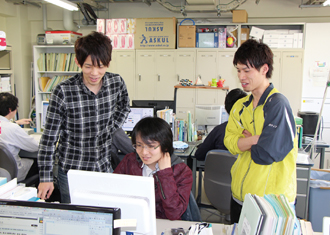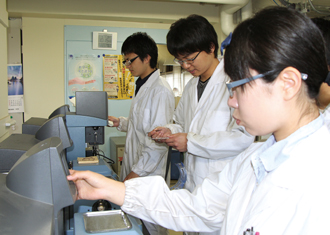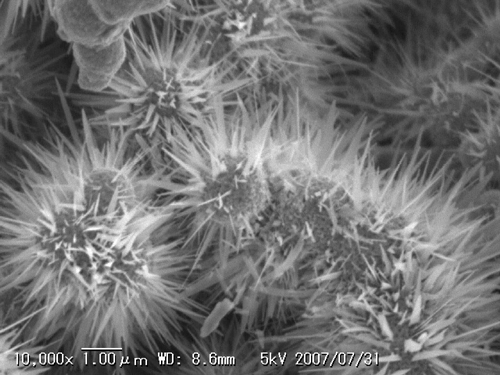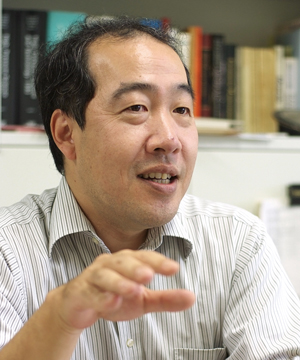Synthetic Chemistry of Advanced Materials
Creating new materials through ultra-high-pressure synthesis and microwave techniques


Chemical technology features in a variety of forms, from everyday products such as mobile phones and computers through to cutting-edge developments such as linear motor vehicles and space probes. These machines and products are made from many different materials. In order to produce a machine or product that exhibits a new type of functionality, it is often necessary to create a new type of material for the purpose. Developing such materials is the aim of our research at the Takizawa Laboratory.
Creating a new material involves designing the desired functionality, determining the atomic combination and performing the synthesis process. In most cases, the results of the synthesis reaction in a standard environment will already be known. So we employ other conditions, such as extreme ultra-high-pressure reaction fields generated by dedicated equipment and microwave environments created by generators like those found in microwave ovens. In these unknown environmental conditions, we often encounter new and unexpected phenomena such as alteration of the atomic arrangement. When this leads to the discovery of a new and viable material that fulfils the aims of the research project, the feeling of elation as a researcher is immense indeed.
This is why we must constantly ask ourselves why and constantly seek answers from our work. Research requires a combination of self-belief, imagination and hard work in designing the optimum approach and choosing from an almost infinite range of methodologies in order to seek a solution. Microwave applications in particular are considered a key plank of 21st-century chemical technology, and as such harbor enormous potential for tackling the challenges that lie ahead.

These look like a sea urchin, but are actually the nano-scale needles on iron oxide
Main Research Themes
- Using microwave irradiation to create functional inorganic materials
- Identifying new materials in ultra-high-pressure reaction fields
- Using ultrasound to design environmentally-friendly, low-cost fabrication processes
- Synthesis and functional expression of low-valence double oxides
- Using crystal chemistry for functional design of inorganic materials

Professor of Applied Chemistry at the Graduate School of Engineering
Doctor of Engineering
Hirotsugu Takizawa
HIROTSUGU TAKIZAWA
Graduated from Akita High School (Akita Prefecture) in 1981. Completed a doctorate in Material Chemistry at the Tohoku University Graduate School of Engineering in 1990. Assumed current position in 2004.
"I like to use my imagination when I study things. I don't like the idea of asking for help or following the lead of others." (laughs)
The Takizawa Laboratory is staffed by students rather than employees, and it is important not to be afraid of failure. As such, our slogan is "The spirit of adventure comes from within."

